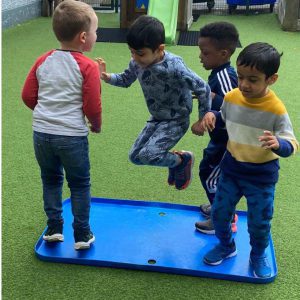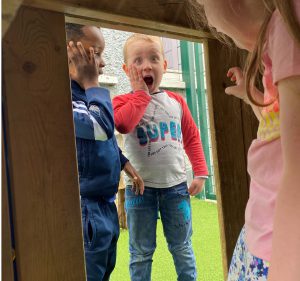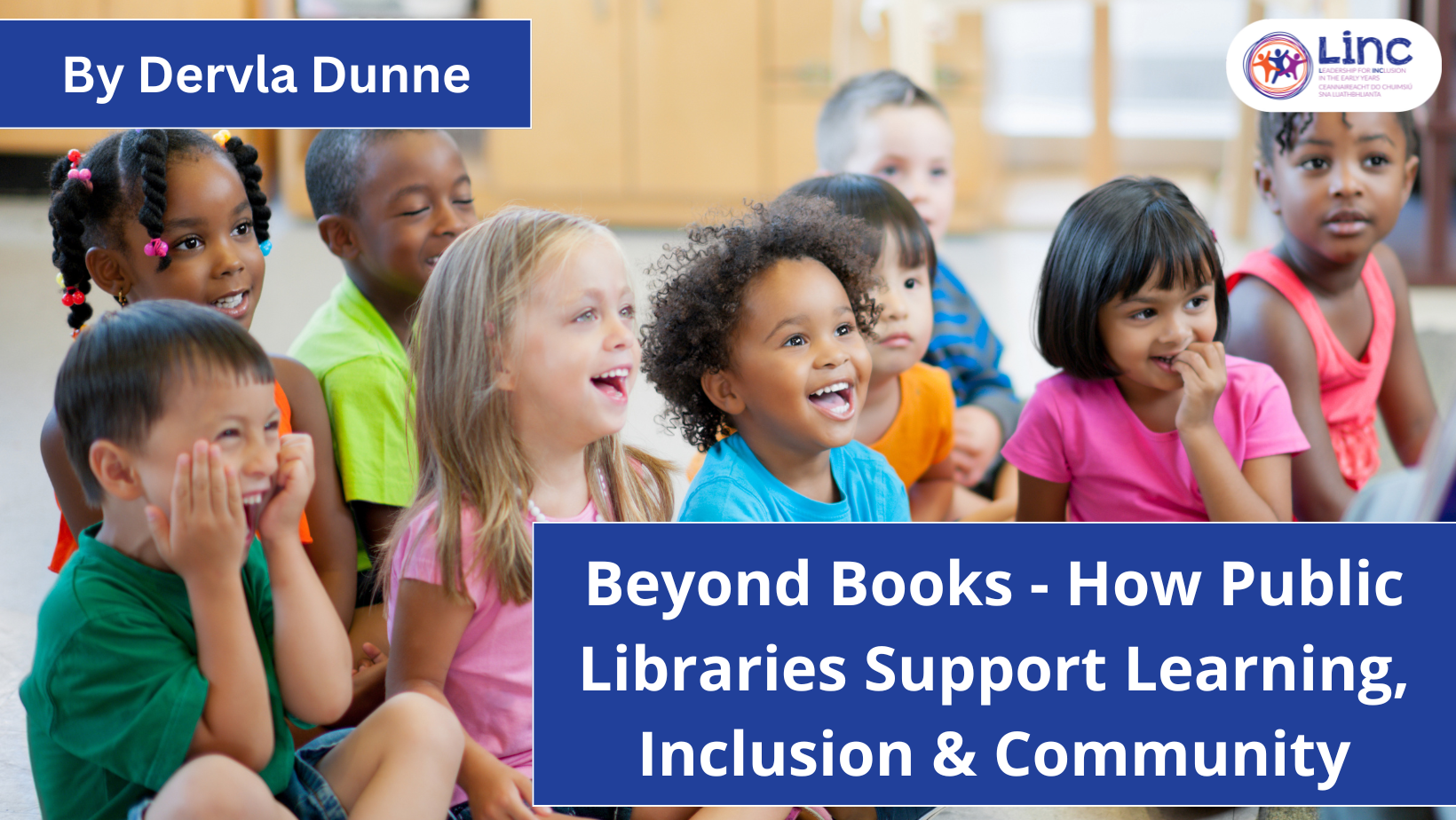Bringing Story-Telling to Life
In this edition of the LINC Blog, LINC student Louise Viti describes how story-telling in her setting has supported children’s social interaction, play experiences and imagination.

Think back to your own childhood compared to now, a society that is so fast paced, online, and can be at times stressful. When I think back to my childhood, the bedtime story each night was my favourite part. One of the most compassionate things you can do with a child is to tell them stories and share books with them. That one-on-one attention that children deserve. I have always loved reading books and wanted to inspire a love of storytelling in the children in my care when I first started working in the early years. But what I have discovered is children are very interested in stories when you can catch their imagination, make them believe they are a part of it, and bring the story to life using different voices, which is exactly what I do. As the story progresses, this animation allows the children to let their imaginations run wild. This can boost their creativity and make them more receptive to new ideas. When I read a story, am I dramatic? Certainly! Am I loud? Without a doubt. Do the children like it when I jump around the room making funny noises? It brightens their (and my) day!!
The Gruffalo was a story that my oldest son and I both fell in love with when he was young. When I read out the story, I quickly realised that I was not the one telling the story…but he was. Exactly as written. I could not believe how quickly he began to predict what would happen next. I was amazed at how far his language had progressed from exploring the words in the story. He appreciated listening to the story as much as I loved reading it. It increased his listening abilities, he became more attentive, and it supported his concentration skills and emerging literacy skills.
In my setting, when September approaches and the children are settling in, we know how difficult this period can be for children and parents. For children from different nationalities, children who may have additional needs, a child who may be shy or upset. So it is my duty to make sure that all of the children in my setting feel loved and comfortable, and what better way to do this than by reading a familiar story that may provide them with a little comfort from home. So, we would pick out story books and sit on the couch and I would read them. It quickly provided me with a sense of what kind of stories the children enjoyed. This year the children at Choice Childcare began to particularly enjoy the storybook We’re Going on a Bear Hunt.
It began with me reading the story and making large grand gestures with my hands and my feet. Before I knew it, I had completed a lap of the room and each child had a huge smile on their face. The story was soon requested daily, and the children gradually anticipated what would happen next in the story and the words that were associated with each page of the book. This story attracted the children, and gradually they were all eager to explore the book independently, turning the pages and reading it in their own playful and imaginative way. I noticed a small group of four children debating who would be the bear one day in the garden. When it was decided, the other three children began walking around the garden doing each piece of the story eventually forming a group of four, then six. By the end of the story the entire group of twenty-two children were in the garden, acting out the story and occasionally seeking assistance if they became stuck or forgot what came next. It was not long before the children began to embellish their story with props. The water they splashed in was the lid from the sand tray, and the treehouse became the bear’s cave. I could see the story in their eyes and the obvious teamwork displayed by the children was amazing. You could see how much love each child displayed for the story and how they used their imaginations.
The children brought this story to life! I saw children with diverse abilities perform the movements and concentrate while participating in the story, and I saw children who spoke English as a second language express their enthusiasm for the story while playing with their friends.
When sharing story books with children, look at the children’s faces and match your animation to the children’s responses. If they are excited about how things are going, enhance how you perform the part. If the children are worried about a character in the story tone it down, as between the teller and the listener a relationship must be established. The ability to visualise a story in their heads from pictures on the pages in the book is what I believe to be the biggest gift an educator can give to the children. Story-telling can open their eyes to lots of new things- places, cultures, and traditions. So next time you pick up a story to read, read it nice and loud, change your voice, run around the room, waddle like a penguin, roar like a lion, squawk like a parrot and most importantly… enjoy it and watch the beautiful wonders that good storytelling can bring to all the children in your setting.



Louise Viti
My name is Louise Viti and I have been working within the early years sector for the last 16 years. I am currently the assistant manager in Choice Childcare in Newcastle, Co. Dublin where I have worked for the past three years. I completed the LINC programme this academic year 2021/2022. I am looking forward to starting my degree later this year with Carlow IT. I live with my partner and our two children Adam and Grace, one of which has additional needs and has a love for storytelling too.
You may also like:

Beyond Books – How Public Libraries Support Learning, Inclusion and Community
Beyond Books - How Public Libraries Support Learning, Inclusion & Community In this edition of the LINC Blog, “Beyond Books – How Public Libraries Support Learning, Inclusion & Community”, Dervla Dunne, A/Librarian at Wexford Town Library, takes us on a tour of...

The LINC Programme and MIC Support Shine’s 2025 Green Ribbon Campaign: Step Up to Stamp Out Stigma
The LINC Programme and MIC Support Shine’s 2025 Green Ribbon Campaign: Step Up to Stamp Out StigmaThe Leadership for Inclusion in the Early Years (LINC) Programme and Mary Immaculate College (MIC) are proud to once again support the national Shine Green Ribbon...

Promoting and Building a Strong Partnership with Parents/Caregivers
Promoting and Building a Strong Partnership with Parents/Caregivers In this edition of the LINC Blog, LINC Graduate Teresa Callanan explores the importance of building strong partnerships with parents and caregivers. She reflects on how open communication, trust, and...
